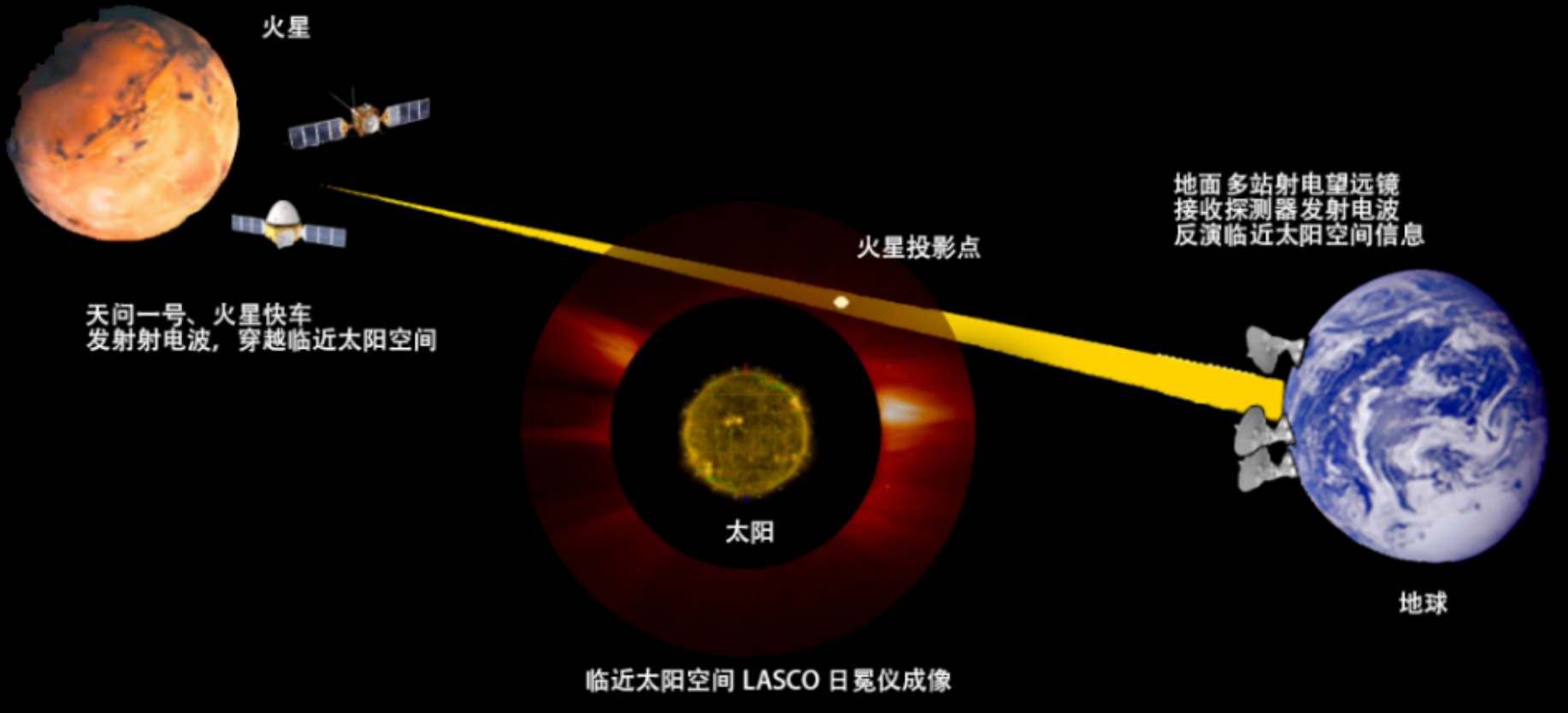政府新闻
中国和欧洲的火星探测器帮助探测太阳附近的大气层 2023-01-16

Shanghai Astronomical Observatory of the Chinese Academy of Sciences
In an "almost-out-of-service" period in 2021, China's Tianwen-1 orbiter, along with Mars Express of the European Space Agency, helped solar scientists know more about what happens near the sun.
During the late September to mid-October stretch in 2021, China's Mars orbiter experienced its first sun transit, when its communication with Earth was significantly disturbed by solar radiation.
The Mars Sun Transit is a phenomenon in which Earth and Mars move to opposite sides of the sun, and the three are almost in a straight line.
During the transit, Tianwen-1 and Mars Express sent out frequent signals, allowing radio telescopes on Earth to examine how those signals were affected.
A paper published recently in Astrophysical Journal Letters revealed that on Oct 9, 2021 -- when the red planet's projection point near the sun was 2.6 times solar radius away from the sun's center -- a violent solar burst event called a coronal mass ejection (CME) caused noticeable disturbances for a period of 10 minutes.
Also, coronal waves were detected near the projection point, a phenomenon reflecting how magnetic fields constrain solar winds, according to the study led by scientists from the Chinese Academy of Sciences.
The scientists also identified the high-speed primary solar wind when the CME was winding down. The high-speed solar wind was detected much closer to the sun than expected, according to the study.
China's Tianwen-1 Mars mission, comprising an orbiter, lander and rover, was launched on July 23, 2020.
Source: Xinhua
